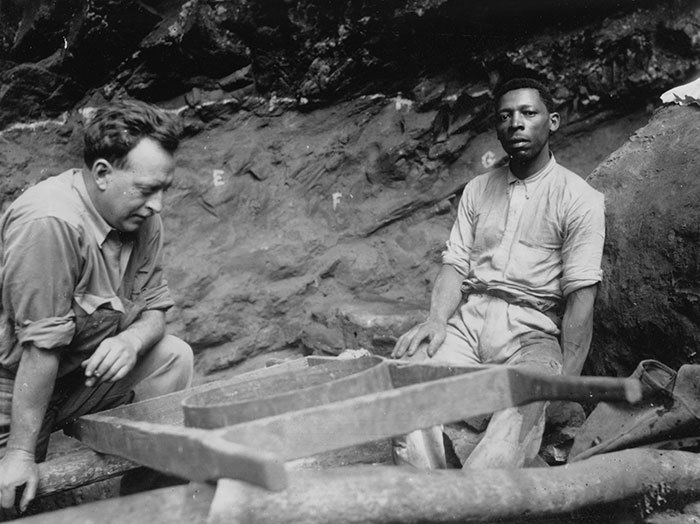Archaeology, photography and the making of a disciplinary archive
08 June 2015 | Story by Newsroom
The Mirror in the Ground is a curated book of twelve short visual essays, drawing on photographs from the collection of South African archaeologist John Goodwin. Drawing on a 10-year research project, Nick Shepherd uses these pictures to explore what it means to approach intellectual history through the photographic image.
|
"Human archaeology in southern Africa has since its beginnings been implicated in the projects of evolutionism and biological racism. Nick Shepherd's delvings into the underground of the discipline are part of an honourable effort to save archaeology from its past, an effort that starts with recognising dig sites for what they have always been: the sacred ground of the disposed. The Mirror in the Ground offers us a fresh way of looking at the photographic archive, with a commentary as moving and compassionate as it is unsettling." – JM Coetzee |
A gaze that pierces
This begins with a single image. Two men are seated at an archaeological site. A sieve, or screen, lies between them. To the left of the frame is the archaeologist A.J.H. 'John' Goodwin (1900-1959), a formative figure in the making of South African archaeology. To the right is an unnamed co-worker. Goodwin has left us a substantial archive relating to his life and work – over a hundred boxes of notes, correspondence, and photographs. Of his co-worker, we know next to nothing. The grid markings on the cave wall identify this as Oakhurst Cave, a large site on the southern Cape coast excavated between 1932 and 1935, remarkable for its many human burials.
Like many photographs of a documentary nature, this image seems pregnant with meaning. At the same time, it is haunted by a certain unknowability. What has passed between the two men? Are they at ease in one another's company? Goodwin's face is averted as he looks into the sieve. In his left hand he holds a cigarette. He is no longer in his first youth; this is an important excavation for his career, even a kind of tipping point. However, it is his co-worker who draws the eye. One registers a composed presence, a neatly assembled set of clothes. Roland Barthes writes of the punctum, the point in any image which pierces, which holds the attention (Barthes 2000; Edwards 2001; Sontag 1973). In this case, it is the directness of the gaze of Goodwin?s co-worker. He returns the camera's gaze, which is at the same time our gaze, the gaze of the viewer, with ... what, in his expression: challenge? Reproach? An unexpected candour?
As with many of the photographs in the Goodwin Collection, this picture is uncaptioned. It comes to us as a scrap or sliver (Harris 2002) from the archive, wafted into the present on a current of sympathy and interest. At the same time, it brings its own busy networks of signification. As a piece of social history it reminds us of the social and political contexts of South Africa in the 1930s: of the colonial past, the advent of Afrikaner nationalism as a political force around this time, and the imminence of apartheid. In this context it certainly matters that Goodwin is white, that his co-worker is black, and that the force of the archive and of the discipline all lie with Goodwin.
As an artefact from the past of the discipline, the photograph invites us to think about the meaning of archaeology in different local contexts, and about the ways in which the discipline is shaped by particular histories of practice. As a fragment from the archive, a single image chosen by me from hundreds of similar images, it reminds us of my own role in shaping this account.
Finally, what we remember about the two men is not their connectedness, but the distance between them. Two figures seated at a sieve, engaged in their common task, together but apart, divided in fact and by history; a leitmotif for the work that follows.
This is an extract from the Prologue to The Mirror in the Ground, by Nick Shepherd. Find out more about it here.
This article is featured in the latest Research at UCT newsletter. Be the first to get the latest research news by subscribing.
 This work is licensed under a Creative Commons Attribution-NoDerivatives 4.0 International License.
This work is licensed under a Creative Commons Attribution-NoDerivatives 4.0 International License.
Please view the republishing articles page for more information.










